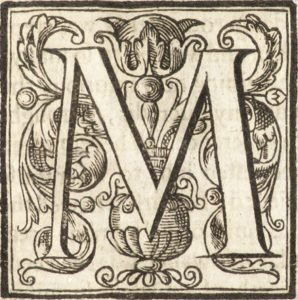 any consorts to the organ have an organ part that is effectively a score of the work. These can be full scores (each part on its own stave, or perhaps similarly-sized instruments (trebles, tenors etc) sharing a stave) or condensed scores (all the parts on two staves). The latter can be distinguished from fully written-out organ parts in several ways, the most obvious ones being that they use five-line instrumental (rather than six-line keyboard) staves and that the identity of parts in polyphonic music is often distinguished by the use of contrasting stem directions. Another distinguishing feature can be a stratigraphic layout, i.e, the music spreads across two pages of an opening, like continental partituren. Some scores were undoubtedly repertory stores, file copies or transmission scores, but most bear evidence of having been used in practice.
any consorts to the organ have an organ part that is effectively a score of the work. These can be full scores (each part on its own stave, or perhaps similarly-sized instruments (trebles, tenors etc) sharing a stave) or condensed scores (all the parts on two staves). The latter can be distinguished from fully written-out organ parts in several ways, the most obvious ones being that they use five-line instrumental (rather than six-line keyboard) staves and that the identity of parts in polyphonic music is often distinguished by the use of contrasting stem directions. Another distinguishing feature can be a stratigraphic layout, i.e, the music spreads across two pages of an opening, like continental partituren. Some scores were undoubtedly repertory stores, file copies or transmission scores, but most bear evidence of having been used in practice.
Scores were useful to organists in a number of ways. The principal one was what Roger North described as a ‘nicer waiting on the parts’ – in other words, they allowed the organist to see what was ‘going on’ in the music, which was very useful if he was dealing with amateur players who might get lost or who might benefit from the organist bringing them in or doubling their parts. It is not coincidence that a number of extant scores were associated with households where amateur violists played with a professional resident player, such as GB-Och Mus. 1005 prepared for the L’Estranges at Hunstanton Hall where Thomas Brewer was resident organist. A number of scores are also in the hands of professional organists for whom extracting a part from the full texture would have been a frequently-employed skill in a variety of other contexts.
Whilst it was certainly possible for the organist to double all or most of the string parts from a score, it seems more likely that he would have improvised a reduced part based on it. His method would certainly have been to double, or at least shadow, the lowest sounding string part at any given moment, and then probably to have followed prominent upper parts as taste or need dictated. What he would NOT have done is to have provided a chordal accompaniment to polyphonic textures. The approach to continuo that many keyboard players are taught today is based on a chordal concept of the texture, but such practices came late to Britain and for much of the century English techniques mirrored those of the Italian partimento and contrappunto allla mente practices of improvised counterpoint. Homophonic textures in the faster dance-based movements would, however, have been appropriate.
Indeed, the generally polyphonic nature of the approach to the keyboard’s involvement in consort music, as demonstrated by the independent lines added to the texture in the fully written-out organ parts and also by the solo organ preludes and interludes, is also underlined by the fact that a number of scores have cues for extra organ points of imitation added to them that are additional to anything notated in the string parts. These first occur in Gibbons’s works involving the ‘great dooble bass’ from the court of Prince Charles, and probably originate in in the theorbo techniques employed by Italian players at the court: Notari, for example, who worked at the court of James I alongside Gibbons, included such cues for extra polyphonic lines in the continuo part to his Prime Musiche Nuove of 1613. Notari’s ‘extra notes’ are indicated by crosses above them in the score. Elsewhere, extra organ cues sometimes occur as additions to the bottom stave in full scores (e.g. GB-Ob. Mus. Sch. MS C.102), or are indicated in condensed scores by different coloured ink (e.g. GB-Och Mus. MS8), or by annotations such as ‘Org.’
Because the essence of the organ’s participation in instrumental consorts was as an equal partner, I resist the temptation to describe consort organ parts as ‘accompaniments’. They are so often much more than this, and require the organ and the organist to play a more active, creative and assertive role in the music than one usually hears today.